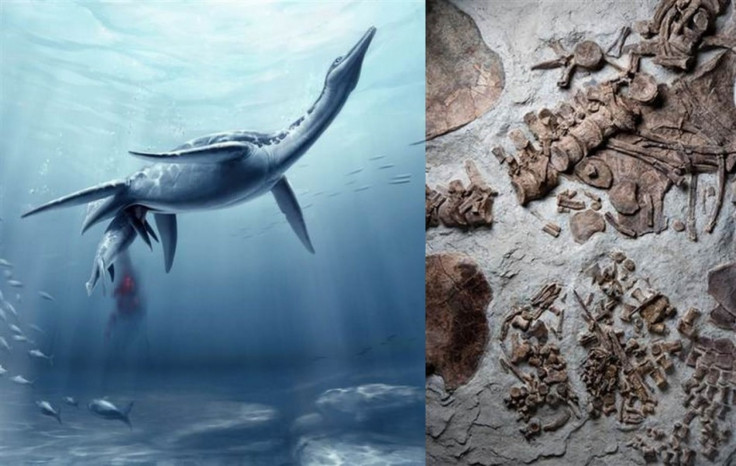Ancient Sea Monster Fossil Demonstrates Evidence of Live Birth

Paleontologists have finally solved a 200-year mystery of a 4.7-meter-long Polycotylus latippinus plesiosaur fossil carrying a large fetus. Found in Kentucky in 1987, the fossilized remains looked like two animals, a larger plesiosaur and another much smaller "jumble of bones".
The new study detailed in the recent edition of the Science journal states that the smaller plesiosaur looked like a fetus and was inside its mother's womb when they met their end.
For years together, scientists and researchers have been pondering about how plesiosaur gave birth to young ones.
"This is the first known pregnant plesiosaur. It demonstrates that the plesiosaur gives live birth and did not crawl out on land (to lay eggs). It puts this 200-year mystery to rest. The really interesting thing is how big this bouncing baby is. It's really large by reptilian standards, by human standards, by any standards you use," LiveScience quoted study researcher Frank O'Keefe, of Marshall University in West Virginia stating.
The finding also suggests that the species gave birth to live young. Also known as viviparity, live birth has also been observed in other species from this era like mosasaurs and ichthyosaurs as well as the present day sea snakes.
However, the plesiosaurs are said to be unique in that they give birth to a single large offspring instead of multiple smaller ones as seen in other animals.
© Copyright IBTimes 2025. All rights reserved.





















